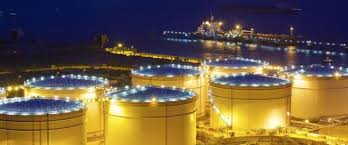Oil & Energy
Need For Sustainable Power Supply
The problem of poor power supply in Nigeria has been terribly lamentable and the situation seems to have defied all efforts by previous governments since in the 80s. one is tempted to now ask what the present administration under President Goodluck Jonathan can do to salvage the country from the ugly trend.
From on-set, the Federal Governemnt has been matching words with action on how better to improve the power sector by ensuring that the mega watt rose to 150 from less than 50, even within the short period of this present dispensation. This was after the Chief executive officer of Olornrisogo Power Station was redeployed to the headquarters for efficiency.
The redeployment followed the warning by the Minister of Power, Professor Barth Nnaji that all managers of the different sections of the utility company –Power Holding Company of Nigeria (PHCN), from generation, transmission to distribution should either sit up or be prepared to be booted out. Nnaji first had a meeting with the Chief Executive officers of the different sections of the utility’s value chain when he stressed the need for them to show commitment to duty to give Nigerians the long expected power supply.
Although he agreed that the sector had suffered grave or gross neglect in a couple of decades ago, particularly under the military administration, he was optimistic that if the capacity Nigeria currently has fully utilized, there would be considerable improvement in power delivery. The question now is, who is the cause of Nigeria’s predicament in the power sector. Is it the government or the authorities of the utility company?
With the efforts so far made by the government, one would think that the utility firm, PHCN is to be held responsible for the incessant epileptic power supply in the country. The helmsmen of the company just as the former Nigeria Electricity Power Authority (NEPA), feel that their duties and at coming to defend their budgets and collecting electric bills and share same among themselves and sit back and seek frivolous reasons to justify spending such funds without practical evidence on ground.
Unlike in the past when all the funds that come to the different sections of PHCN pass through the headquarters, the CEOs of the different units currently go to government to defend their annual budgets and spend the money according to their discretions thereby and up at not utilizing the money to provide constant electricity for the people. Some utilize the money in providing poor service leaving undone what the money is meant for.
However, the Chief executive officers saw that it was no business as usual when the minister clamped down on four of their colleagues and that the ministry didn’t come to the combat in child’s gloves. Although, ever since that was done, the situation changed in terms of power supply but a lot needs to be done. The minister needs to tour all the power facilities across the country including the South-South and Port Harcourt in particular to see for himself or have a practical feel of what the people of the area are suffering. All is not well with the PHCN formations across the country and for the Niger Delta region that produces the bulk of the nation’s wealth, special attention should be paid to give the a sense of belonging and to compensate them for the long neglect.
The minister should extend his “Capacity Recovery” to Rivers State because from the look of things lack of commitment and human errors account for considerable power failure in the state. There is need to ensure sustainable electricity supply in Rivers State considering its population and economic contribution coupled with the fact that sustainable and successful business is bi-product of constant electricity supply.
An auto manufacturing company could not be built in Nnewi, Anambra State because of poor power supply in the country. According to the Minister of Power, his efforts as a key player in the do were fruitless as the planned power supply.
In a paper he presented during the 20th anniversary of Anambra State Nnaji said “it was the fledging auto industry in Nnewi which inspired me in the late 1990s to take steps to establish in Nigeria a state-of-the-art company to manufacture auto parts including engines, when I was the ALCOA foundation Professor of Manufacturing Engineering at the University of Pitts burgh”.
The only way to attract investment to Nigeria is for the government to ensure steady and uninterrupted electricity at all levels. The country is blessed with all kinds of natural resources which can attract foreign investors but because of the non-availability of uninterrupted electricity, investors are scared.
Most investors after carrying out feasibility study of the kind of investment they intend to bring into the country will end up being deterred because of the huge, cost of acquiring and fueling a generating plant that would be able to power their investment. Reports have shown that everyday industries and other manufacturing concerns are collspsing and unemployment rate rising as investors are not willing to come and do business in the country because of lack of sustainable power supply.
Sadly, an average Nigerian home spends more than the N18,000 minimum wage which is yet to be paid, a month to power its generator to have power. Much of the economic undevelopment in the country today is because of lack of power, at trend all patriotic Nigerians must not allow to continue. This power has risen to a point that the President, Dr. Goodluck Jonathan and all the state governors should make steady power supply their one-point agenda and do everything humanly possible to ensure that this is achieved before the end of 2012.
Obviously, the government at federal and state levels should partner with other stakeholders or establishments in ensuring that the power problem becomes a thing of the past because until that is done, no matter how much we spend on jingles and advertisements in the local and foreign media to woo investors to come and invest here, it will continue to be a mirage.
Ghana and other industrialized countries did not advertise in international media before virtually multinational and local companies were attracted to invest there. The issue of power supply is however, over-flogged because it is the main key to industrialization and self-reliance in any country and any country without steady electricity remains impoverished with its people.
It has become necessary to suggest that Nigerian governments should send delegations to China and other countries and engage energy companies that will give the country steady power supply so that we can become economically viable, as that is the only way to generate to generate employment for our teeming youths.
In pursuance of its regulatory functions, the Nigerian Electricity Regulatory Commission (NERC) in collaboration with the Standards Organization of Nigeria (SON) and the National Environmental Standards and Regulations Enforcement Agency (NESREA) has approved standards and guidelines for the issuance of clearance certificates for importers of generating sets and broken-down parts. This is to ensure that all generating sets to be imported into the country meet all the approved standards and quality and to stop the indiscriminate importation of generating sets into the country.
There has been little or no difference in the state of power supply in the country since the power reform was initiated by former president Olusegun Obasanjo’s government in 2005. This is why the Nigerian Electricity Regulatory Commission (NERC) has embarked on a process of consulting with stakeholders over the need or otherwise to increase electricity tarriff in the country. Chief executive officer of NERC, Dr Sam Amadi, at a workshop on major Review of the Multi-year Tarriff Order (MYTO) urged the shareholders to be objective over the review process, noting that “public power supply in the country is still a standby in most homes and offices, as it was in 2005 when the reform in the power sector began.”
If we must achieve the goal of giving every citizen access to stable, reliable and fairly priced electric power, a reliable and sustainable framework must be put in place to ensure the robust interaction of market forces with social policy to attain equilibrium. This we can do by establishing a pricing regime that will sustain massive private sector investment and guarantee a positive return on investment, while also being fair to underprivileged consumers. The power industry is characterized by lack of a transparent price determination process and abysmally low tariffs, all based on the political whims and considerations of the PHCN, as opposed to the economic principle of full cost recovery.
Shedie Okpara
Oil & Energy
Reps Launches Probe Into N200bn CBN Loan To DISCOs
The House of Representatives has launched an investigation into the disbursement and utilisation of the N200billion Central Bank of Nigeria (CBN) loan allocated for the National Mass Metering Programme (NMMP) to Electricity Distribution Companies (DISCOs).
Chairman, House Committee on Public Assets, Rep. Uchenna Okonkwo, disclosed this in a statement in Abuja.
He confirmed that a 19-member sub-committee had been inaugurated to probe the matter thoroughly.
Okonkwo recalled that the NMMP, initiated in 2020, was designed to provide free electricity meters to Nigerian consumers through the Licensed Electricity Distribution Companies (DISCOs).
He said the programme was a joint initiative of the CBN, the Nigerian Electricity Regulatory Commission (NERC), and other stakeholders in the Nigerian Electricity Supply Industry (NESI), aimed at eliminating estimated billing, improve transparency in energy usage, and enhance customer satisfaction.
Speaking on the launch of the NMMP, the Rep said the programme was to be implemented in three phases to ensure the reduction of collection losses and improve market remittances in the industry.
“Under the pilot phase of the programme’s implementation, CBN commenced with the sum of N59.280 billion for procurement and installation of one million meters in 2020 at an interest rate of 9 per cent after a two year moratorium.
“Preliminary research on the NMMP has shown that instead of the pronounced amount of N59.280 billion naira for the phase 0, what was released was N55.4 billion for procurement and installation of 962,832 meters instead of one million meters pronounced by CBN”, he noted.
Okonkwo stated futher that concerns have been raised regarding repayment, with the committee noting discrepancies in the repayment of the funds by the DISCOs.
According to Okonkwo, “Research has also shown that the eleven Electricity Distribution Companies who received the loan have paid back to CBN as refund for the N54.4 billion they received in 2020 without mentioning the 9 per cent interest on the loan.”
The lawmaker, however, said the subsequent phases of the programme, which were expected to significantly expand metering across the country, have stalled, explaining that Phase 1, which was to be funded by the CBN and Deposit Money Banks (DMBs) for 1.5 million meters, and Phase 2, expected to be financed by the World Bank for four million meters, are yet to take off.
He said the House, exercising its constitutional powers under Sections 88(1) and (2) of the 1999 Constitution, resolved to investigate the matter with a view to safeguarding public interest.
According to him, the sub-committee is expected to scrutinise all aspects of the NMMP funding, from disbursement and meter procurement to distribution and repayment mechanisms.
The 19-member committee comprises Reps. Obed Shehu, Ali Shettima, Abel Fuah, Salisu Koko, Ahmed Munir, Sani Umar Bala, Gbefwi Jonathan, Abdulmaleek Danga, Chinedu Obika, and Okunlola Lanre.
Others include Reps. Abass Adekunle, Akinosi Akanni, Obuzor Victor, Peter Akpanke, Ngozi Lawrence, Ogah Amobi Godwin and Ikeagwuonu Onyinye.
It would be noted that the NMMP was expected to be a game-changer in Nigeria’s power sector by reducing estimated billing, enhancing energy accountability, and restoring consumer trust.
However, the current revelations point to implementation failures and possible mismanagement of public funds.
Analysts believe that the outcome of the House probe could lead to reforms in electricity metering policy and strengthen regulatory oversight of loan disbursements to DISCOs.
Oil & Energy
“Renaissance Energy, NNPC JV Donate ICU Equipment To RSUTH

Renaissance Africa Energy Company Limited and its joint venture partners, including the Nigerian National Petroleum Company Limited (NNPC), have donated vital medical equipment and essential drugs to the Intensive Care Unit (ICU) of the Rivers State University Teaching Hospital (RSUTH).
Among the equipment are three ventilators, a laser therapy machine, as well as significant supply of seed stock drugs targeted at enhancing the hospital’s capacity to provide critical care and ensuring consistent drug availability.
Speaking at the Handover Ceremony at Renaissance Energy Headquarters, in Port Harcourt, the General Manager, Relations and Sustainable Development, Renaissance Africa Energy, Igo Weli, said, “The gesture by Renaissance and our partners is to enhance the capacity of the hospital to provide critical care to patients in need; improve the training of upcoming healthcare personnel; and provide support to dedicated healthcare professionals in their mission to save lives and improve patient outcomes.”
The Chief Upstream Investment Officer, NNPC, Oluwaseyi Omotowa, noted that the donations were part of a broader social intervention strategy of the Renaissance-operated joint venture.
Omotowa, who was represented by the Lead, Stakeholder Relations, NNPC Upstream Investment Management Services, Mrs. Uzo Ejidoh, further said “the JV has a deliberate corporate social responsibility strategy to serve the people.
“This is an unchanging commitment, hence our steadfast support and investment in social impact projects for the healthcare sector to continue to transform lives”.
Recieving the donations, the Chief Medical Director, RSUTH, Professor Chizindu Alikor, stated that the hospital was committed to the delivery of excellent healthcare along with research and training.
Alikor said, “The teaching hospital is on an upward trajectory. The ICU facilities were over stretched, and we are excited that our request to Renaissance and its partners for assistance was granted.
The CMD expressed the hospital’s confidence in Renaissance’s capacity and people-centric interventions, especially as it concerns Corporate Social Responsibility (CSR) in the health space.
By: Lady Godknows Ogbulu
Oil & Energy
Tight Now, Loose Later: Oil Futures Flash Warning

Last week, OPEC+ announced it will once again accelerate the pace of unwinding of production cuts, with output targets for June increasing by 411,000 barrels per day, equivalent to three monthly increments.
This follows a similar move in April, with the organization appearing willing to stay the course amid low oil prices and fears of weakening demand.
We reported that global crude inventories remain low enough, thus giving OPEC+ a window to scale back its voluntary cuts until the market surplus finally arrives.
Saudi Arabia appears intent on “punishing” OPEC+ rascals such as Kazakhstan and Iran for repeatedly violating their quotas.
Commodity analysts at Standard Chartered have reported that the latest OPEC survey of secondary sources reveals that Kazakhstan’s crude oil output clocked in at 1.852 mb/d in March, 384 kb/d above its OPEC+ quota.
Further, the country also failed to keep its promise to cut 38 kb/d in compensation for overproduction in March, bringing its total overproduction to 422 kb/d.
The same scenario is expected to unfold in the coming months. Kazakhstan produced 240 kb/d more y/y in March, a sharp contrast from the other eight OPEC+ members who produced a combined 612 kb/d less.
And now, the oil futures markets are sending a dire warning that oil bulls could find themselves in trouble quite soon due to a combination of the OPEC+ output hike and Trump’s tariffs.
Oil futures curve has formed a rare “smile” shape, a structure Morgan Stanley says was last seen briefly in February 2020 just before the infamous oil price crash.
On Wednesday, Brent futures’ July contract was trading at a premium of 74 cents to the October contract, a market structure known as backwardation, foreshadowing immediate tight supply.
However, prompt prices from November have formed a contango, with forward prices flipping to a discount, indicating oversupply as traders predict Trump’s tariffs will eventually weaken oil demand. Having backwardation and contango together leads to the rare “smile” shaped curve.
According to the latest available data by the International Energy Agency (IEA), global oil inventories stood at 7.647 billion barrels in February, down from 7.709 billion barrels for last year’s corresponding period and close to the bottom of their historical five-year range.
Meanwhile, refiners’ appetite for crude is climbing ahead of the peak driving season in July and August, “Refinery maintenance in the Atlantic basin will start to taper off, increasing oil demand (for refining)… Summer driving should provide some support,” BNP Paribas analyst told Reuters.
Global oil demand is expected to rise by 1.3 million barrels per day in the third quarter of the current year, up from an average of 104.51 million bpd in the second quarter, the IEA has predicted.
The 1 million bpd output increases announced by OPEC+ so far, coupled with another 400 kb/d increase in July, almost matches the predicted demand increase, implying oil markets will not face a surplus till late in the year.
Meanwhile, oil prices jumped in Thursday’s session after the Trump administration announced it has struck a trade deal with the UK. Brent crude for July delivery was up 2.7% to trade at $62.75/bbl at 12.50 pm ET while WTI crude contract for June delivery added 3.0% to change hands at $59.86 per barrel. However, terms of the deal appear to fall well short of the “comprehensive” package Trump earlier touted.
According to Trump, UK Prime Minister, Keir Starmer, will further reduce non-tariff barriers and fast-track U.S. goods into his country.
Meanwhile, another solid week of jobless claims underscored the Federal Reserve’s ongoing unwillingness to cut rates. U.S. jobless claims fell 13,000 to 228,000 for the period ending on May 3.
Continued claims, however, clocked in at just over 1.9 million, near the highest levels since 2021, suggesting workers are still finding it difficult to secure new jobs as the economy stalls.
That said, commodity analysts at Standard Chartered have predicted that path of least resistance for oil prices is lower in the coming months, with oil prices to remain low before beginning a gradual recovery later in the year as U.S. oil output declines.
StanChart, however, says there’s some technical support in the short-term, with fundamentals remaining fairly positive. Recently, StanChart cut its 2025 oil price forecast to $61/bbl from $76 and also lowered its 2026 forecast to USD 78/bbl from $85 citing Trump’s tariffs.
By: Alex Kimani
-

 Niger Delta3 days ago
Niger Delta3 days agoPolice Arrest 95 Cultists, Recover Firearms In Benin Raids
-

 Politics3 days ago
Politics3 days agoWhy Legislature’s Still Executive’s Appendage In Nigeria – State Lawnaker
-

 Sports3 days ago
Sports3 days agoPRIVATE SECTOR IS KEY TO GRASSROOTS SPORTS DEVELOPMENT – NSC Chairman
-

 Rivers3 days ago
Rivers3 days agoEmolga Administrator Tasks Stakeholders On Peace, Dev.
-

 News3 days ago
News3 days agoNSCDC, Navy, Army uncover illegal refinery in Anambra
-

 Opinion3 days ago
Opinion3 days agoNigeria’s Insecurity And Co-Existence
-

 Sports3 days ago
Sports3 days agoBrighton Whip Wolves 2-0
-

 Business3 days ago
Business3 days agoFG Bans Waivers For Threaded Pipes

